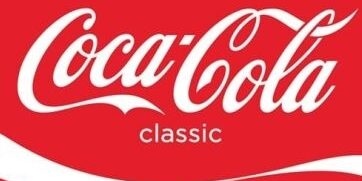Graphic designers can often hone their craft and specialize in an individual area of the business. Some find the challenges of working on corporate materials rewarding, while others enjoy crafting cover art for media. For those graphic designers who specialize in logo design, there might not be as many thrilling effects used to create the product. However, the final result is an image that will typically last a significant amount of time and be applied to products, papers, buildings and much more.
According to Small Business Chronicle, the purpose of a corporate logo is to provide a graph that conveys the company's unique identity. Through the use of fonts, colors and images, the logo is intended to gain a reaction from an audience. The key operating principles and company brand propositions are supposed to be conveyed with this single image, which is why a logo is used often by itself on all manner of marketing materials.
For a graphic designer who is trying to find new clients or work, it's important to have a modern resume and examples of past work. Make sure that a portfolio demonstrates your knowledge of these four logo design principles:
1) Flexibility. A logo will be required to stand the test of time and be applicable to various mediums. That means that the image and font used should be easily recognizable as a brand indicator online, on a mobile device, on paper and on large signs. The Coca Cola logo is one of the most recognizable images in the modern age. However, when it was first created, the internet wasn't even an idea. The flexibility of the design allows the Coca Cola logo to find itself fixed and displayed to multiple mediums.
2) Strong effects. The use of gradients, shadows and other embellishments may make a logo look trendy, but, within a decade or two, the image will become outdated at best and unusable in a worst case scenario because it isn't easily transferred to other mediums. Marketing Profs reported that in the past, logos were able to include these effects because the use of the image was controlled, however, now that is not the case. Anyone and everyone can take a snapshot or screenshot of a logo and the result could lead to misbranding or a poor quality image.
3) Typeface. As a graphic designer who specializes in logos, it's imperative to understand the emotional ties associated with typeface. A finance organization is hardly going to use Comic Sans as its logo font, yet a retailer marketing to pre-teen girls might. The right font can communicate to an audience what a business is about and how it perceives itself. The Next Web reported that for an artistic feel a designer should use script type, for a more formal look use serif typefaces and for playful and youthful consider using sans serifs.
4) Color. Most logo designers recommend keeping the color combinations used in a logo to the bare minimum. According to the source, two or four hues are the average. The only situation in which a logo designer may want to incorporate more colors is if the logo will only appear online, which is hard to guarantee. A logo only used online benefits from the expectation that graphics and color saturation levels will remain within a set standard, so the image will stay high quality. However, as mentioned before, technologies and mediums develop over time, and there's no guarantee about where a logo may end up.
Profiles is a leading creative and marketing staffing agency dedicated to connecting top talent with industry-leading companies. Since 1998, we specialize in providing tailored staffing solutions that drive success and growth. Our team of experts is committed to delivering exceptional service and insights that help businesses and professionals thrive in the dynamic landscape of creative, marketing, and technology. Through our deep industry knowledge and client-centric approach, we ensure that both talent and organizations achieve their full potential.





